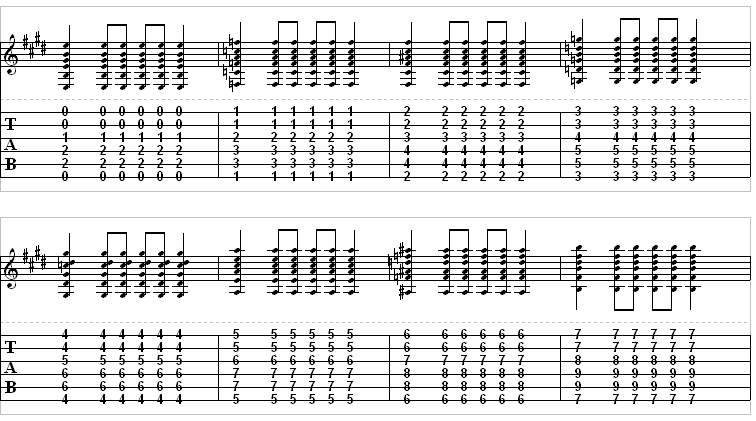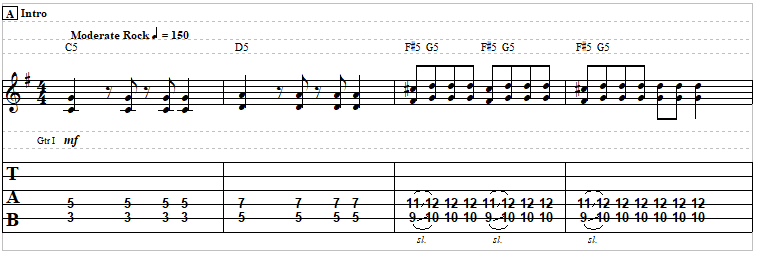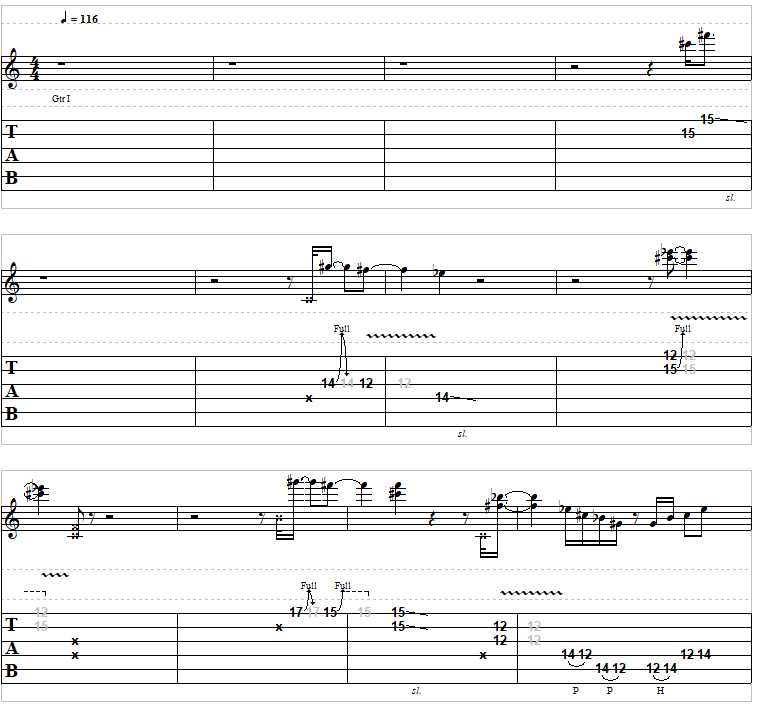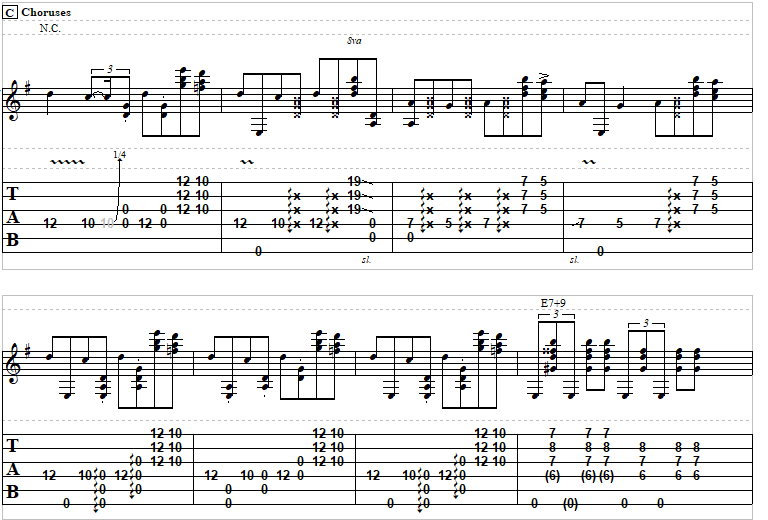You should have some fun with this intro. It isn’t difficult, and all based on barre chords, except for the very first measure.

Here’s what it sounds like looped at the normal tempo of 120 bpm:
You should have some fun with this intro. It isn’t difficult, and all based on barre chords, except for the very first measure.

Here’s what it sounds like looped at the normal tempo of 120 bpm:
https://vimeo.com/5332263
Here’s what the lead, rhythm, and bass guitars all sound like together:
Lead Guitar


Here’s what the lead, rhythm, and bass guitars all sound like together:


Click Here For The Complete Transcription To “Walk Don’t Run” (PDF)





Here is a cool riff from Tull that has quite a bit of technique that all guitarists need to know. The ribbon-like symbol in the first and second measure is known as “vibrato.” This is when you rapidly shake the string being played with your fret hand. There are also a few slides, which are performed by sliding your fret hand on the strings while playing at the same time.


